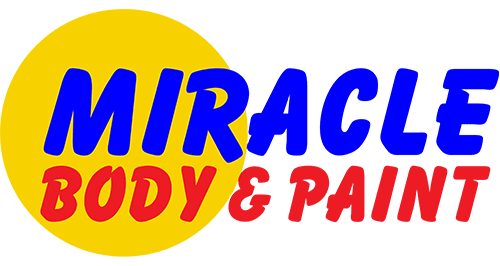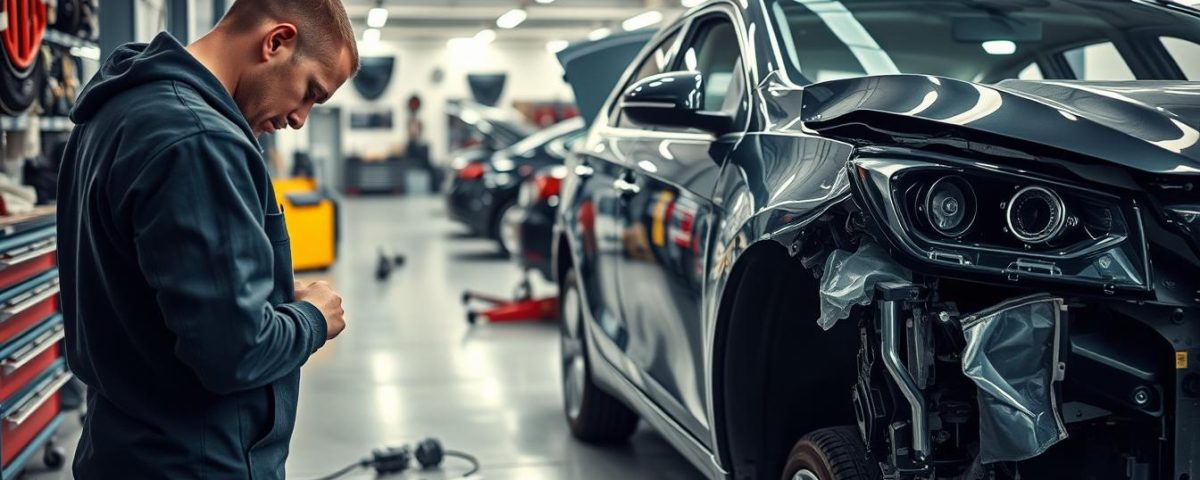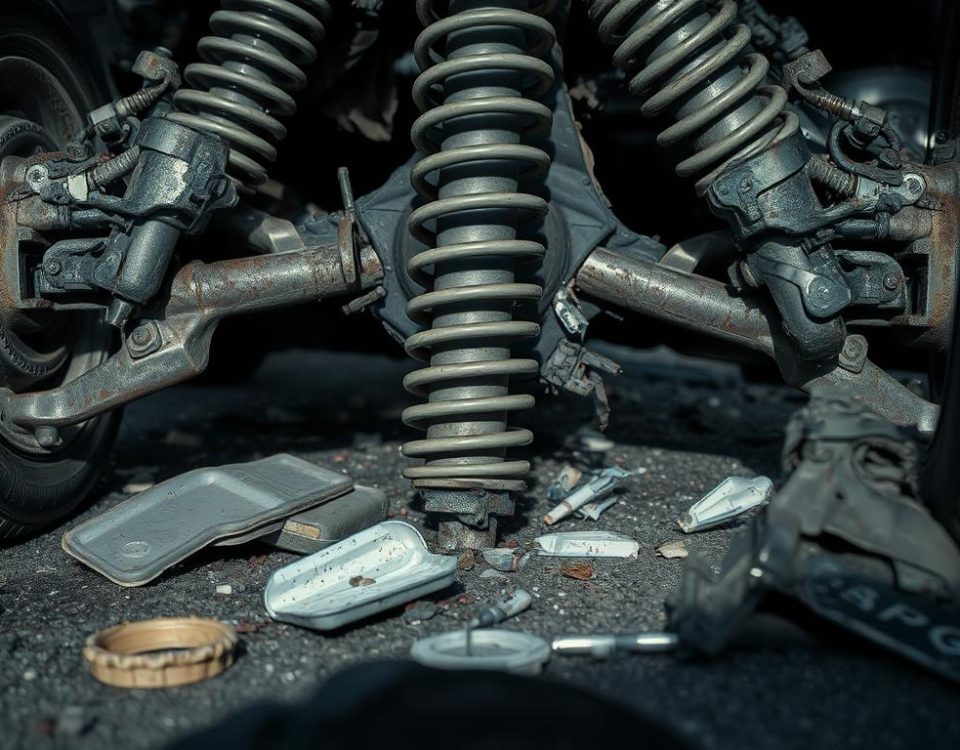
What To Do Immediately After a Car Accident
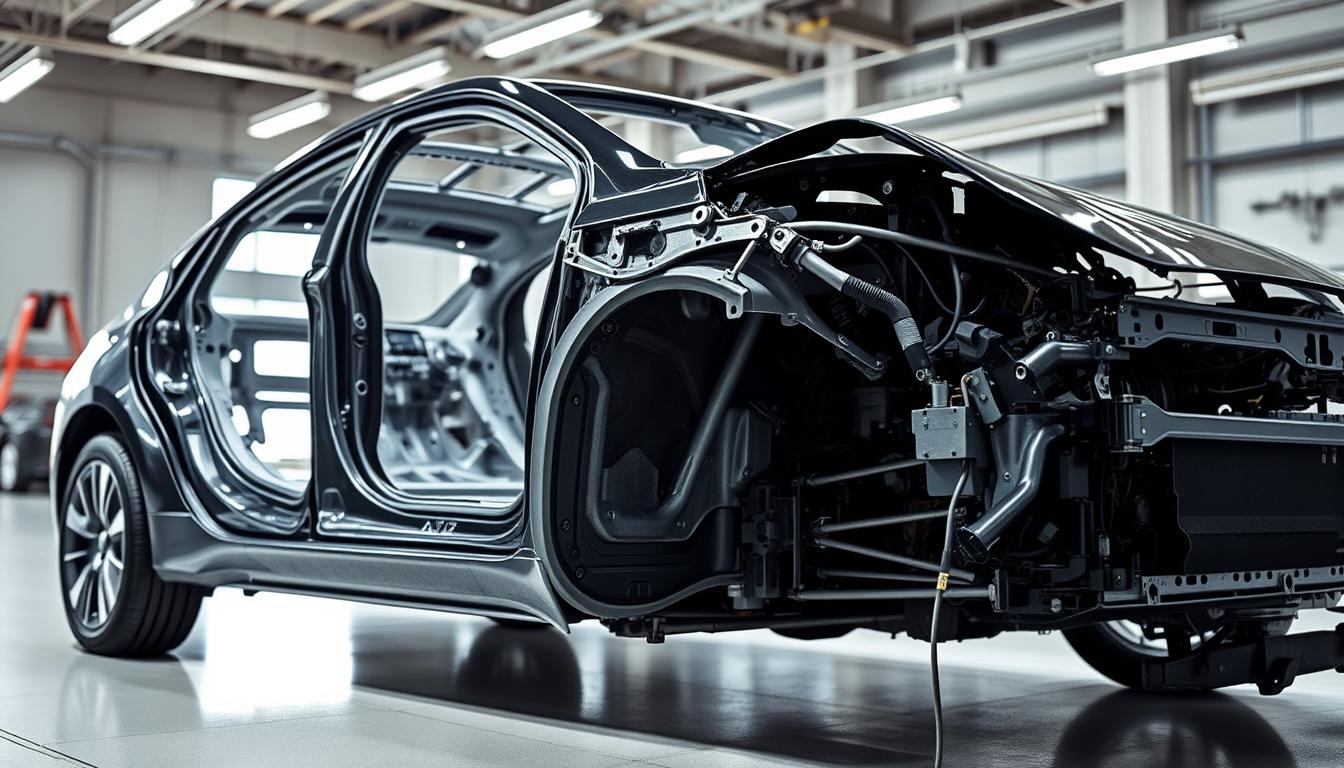
How Frame Damage Can Impact the Safety of Your Car
After a collision, understanding the various components of your car’s body is crucial for effective repair and ensuring your vehicle’s safety and performance.
The car’s body is made up of numerous auto parts that work together to provide structural integrity and enhance its overall functionality.
At Miracle Body and Paint, we believe it’s essential to comprehend how different parts contribute to your car’s safety and performance after a collision.
Key Takeaways
- Understanding your car’s components is vital after a collision.
- Different auto parts contribute to the vehicle’s structural integrity.
- Effective collision repair ensures your car’s safety and performance.
- Miracle Body and Paint is here to help with your car’s repair needs.
- Proper repair enhances your vehicle’s overall functionality.
What Are Auto Body Parts?
The exterior of a vehicle is composed of various auto body parts that serve multiple purposes. These components are crucial for both the aesthetic appeal and the functional integrity of the vehicle.
Auto body parts include bumpers, fenders, hoods, doors, and other components that protect the vehicle and its occupants. At our service centers, including our locations in major cities across the United States, we specialize in repairing and replacing these parts to ensure your vehicle is restored to its original condition.
The Role of Auto Body Parts
Auto body parts play a significant role in protecting the vehicle and its occupants from damage. For instance, bumpers are designed to absorb impact during minor collisions, while fenders help to direct airflow around the tires, improving aerodynamics.
Moreover, these parts contribute to the overall performance of the vehicle. For example, a well-maintained hood ensures that the engine operates within a safe temperature range, while doors provide secure access to the vehicle’s interior.
Importance of Understanding Body Parts
Understanding the different auto body parts is essential, especially after a collision. Knowing what parts are damaged and how they affect the vehicle’s performance can help you make informed decisions about repairs.
At our service centers, our experts are trained to assess damage and provide guidance on the necessary repairs or replacements. We offer a range of services, from body work to the installation of new auto parts, ensuring that your vehicle is restored to its pre-accident condition.
By understanding the role and importance of auto body parts, you can better appreciate the work that goes into maintaining your vehicle’s condition. Whether it’s repairing a bumper or replacing a fender, our team is dedicated to providing high-quality service.
Common Types of Auto Body Parts
After a collision, understanding the various auto body parts can help you navigate the repair process more effectively. At our company, we specialize in collision repair and have extensive experience with a wide range of auto parts.
Auto body parts are crucial for both the aesthetic appeal and operational integrity of your vehicle. The most common types include:
Bumpers
Bumpers are designed to absorb impact during minor collisions, protecting your vehicle’s body and other critical components. They are typically made from materials like plastic, aluminum, or steel.
Fenders
Fenders cover your vehicle’s wheels and protect the body from debris thrown up by the tires. They are a critical component in maintaining your vehicle’s aerodynamic performance and overall structural integrity.
Hoods
The hood is a vital auto body part that covers the engine compartment. It not only protects the engine and other components from the elements but also plays a role in your vehicle’s aerodynamics and overall design.
Doors
Doors are another essential auto body part, providing access to the vehicle’s interior while also contributing to its structural integrity and safety features. Properly functioning doors are crucial for the overall security and comfort of your vehicle.
Understanding these common auto body parts and their functions can help you better appreciate the complexity of auto parts and the importance of proper collision repair. Our team is dedicated to providing top-notch service for all your auto body needs.
The Functions of Each Auto Body Part
Auto body parts are not just cosmetic; they serve critical functions that impact your vehicle’s performance and safety. Proper body work is essential to ensure that these parts function as intended, especially after a collision repair.
The various auto body parts work together to provide a safe and efficient driving experience. Understanding their specific roles can help you appreciate the importance of maintaining and repairing them properly.
Bumpers as Safety Features
Bumpers are designed to absorb the impact of low-speed collisions, protecting your vehicle’s body and other critical components. They are a crucial safety feature, and their proper functioning is vital for preventing damage in the event of an accident.
A well-maintained bumper can significantly reduce the risk of damage to other parts of your vehicle. During a collision repair, it’s essential to inspect the bumper and replace it if necessary to ensure your vehicle remains safe to drive.
Fenders and Aerodynamics
Fenders play a significant role in your vehicle’s aerodynamics, helping to direct airflow around the wheels and improve overall efficiency. They also protect the wheels and tires from debris, which can cause damage or lead to accidents.
In addition to their functional role, fenders contribute to your vehicle’s appearance. Proper body work on fenders can enhance your car’s aesthetic appeal while maintaining its aerodynamic benefits.
Hoods: More Than Just a Cover
The hood of your vehicle is more than just a cover for the engine; it is designed to protect the engine and other vital components from damage. It also plays a role in your vehicle’s aerodynamics and overall appearance.
A properly maintained hood is essential for ensuring the longevity of your vehicle’s engine and other components. Regular inspections and maintenance as part of body work can help prevent issues and ensure your vehicle continues to run smoothly.
Materials Used in Auto Body Parts
The construction of auto body parts involves a variety of materials, each chosen for its specific properties. At our company, we prioritize the use of high-quality materials to ensure durability and performance.
Auto body parts are made from materials such as steel, aluminum, and plastic, each with its unique advantages and disadvantages. The choice of material depends on several factors, including the part’s function, the vehicle’s design, and safety considerations.
Steel vs. Aluminum
Steel is a popular choice for auto body parts due to its strength and affordability. It is often used in parts that require high durability, such as frames and certain structural components. On the other hand, aluminum is valued for its lightweight properties, which can improve a vehicle’s fuel efficiency and handling. Aluminum is commonly used in parts like hoods and trunk lids.
When comparing steel and aluminum, it’s essential to consider their respective strengths and weaknesses. While steel offers superior strength, aluminum provides a significant reduction in weight. Our company carefully selects between these materials based on the specific requirements of each auto body part.
The Rise of Plastic Components
In recent years, there has been a notable increase in the use of plastic components in auto body parts. Plastics offer a range of benefits, including flexibility, resistance to corrosion, and the ability to be molded into complex shapes. They are often used in bumpers, fenders, and other exterior parts.
The use of plastic components also contributes to a reduction in vehicle weight, which can enhance fuel efficiency. Additionally, plastics can be more cost-effective than metals in some cases, making them an attractive option for manufacturers. At our company, we are committed to utilizing the best materials for our auto body parts, ensuring that our products meet the highest standards of quality and performance.
By understanding the properties and applications of different materials, we can better appreciate the complexity and craftsmanship involved in creating auto body parts. Whether it’s steel, aluminum, or plastic, each material plays a vital role in the overall performance and safety of a vehicle.
Repairing vs. Replacing Auto Body Parts
The aftermath of a collision often involves a crucial decision: whether to repair or replace damaged auto body parts. This decision is pivotal, not just for the vehicle’s aesthetic appeal but also for its safety and overall value. Understanding the extent of the damage and the associated costs is essential in making an informed decision.
Assessing Repair Viability
Repairing auto body parts can be a cost-effective solution when the damage is minor. For instance, if a bumper is scratched or dented but still intact, a repair might suffice. Collision repair techniques have advanced significantly, allowing for effective fixes that restore the vehicle’s original condition.
Knowing When Replacement is Necessary
However, there are situations where replacement is the more prudent choice. If the damage is extensive, such as a severely crumpled bumper or a compromised structural element, replacement is often necessary to ensure safety and prevent future issues. Body work that involves significant reconstruction may not be economically viable or safe in the long run.
In conclusion, the decision to repair or replace auto body parts after a collision should be based on a thorough assessment of the damage and consideration of the costs and benefits associated with each option. By understanding the factors involved and seeking professional advice when needed, car owners can make informed decisions that balance cost, safety, and the vehicle’s overall condition.
Assessing Damage After a Collision
When a collision occurs, evaluating the damage to your car’s body is essential for determining the next steps. This process involves a thorough examination to identify all affected auto body parts.
Initially, a visual inspection can help identify obvious damage. However, some damage may not be immediately visible.
Visual Inspections
A visual inspection is the first step in assessing damage. Look for:
- Dents or scratches on the body
- Misaligned or damaged panels
- Broken or cracked components
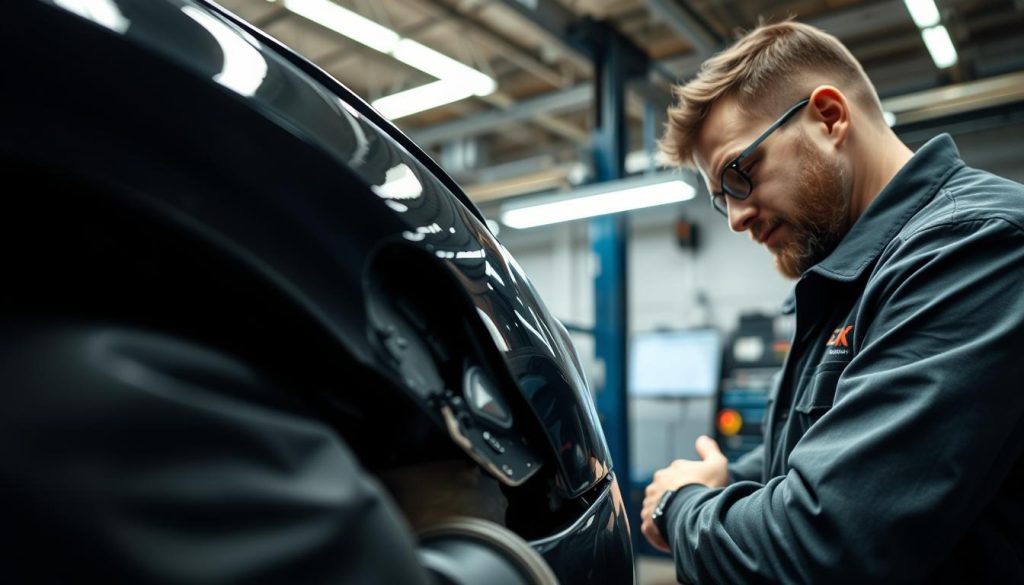
Professional Evaluations
While a visual inspection can reveal some damage, a professional evaluation is necessary to identify hidden issues. Professionals use specialized tools and techniques to assess the full extent of the damage.
Seeking help from experienced services like “Miracle Body and Paint” ensures that your vehicle is thoroughly inspected and repaired correctly.
Some benefits of professional evaluations include:
- Accurate assessment of damage
- Identification of potential future problems
- Expert recommendations for repair or replacement
By combining visual inspections with professional evaluations, you can ensure that all damage is identified and addressed, getting your vehicle back to its optimal condition.
The Role of Auto Body Technicians
With specialized training and expertise, auto body technicians are essential for repairing and restoring vehicles after an accident. Their role is multifaceted, involving not just the repair of damaged body parts but also ensuring that the vehicle’s appearance and functionality are restored to pre-accident conditions.
Training and Expertise
Auto body technicians undergo rigorous training to acquire the skills necessary for collision repair and body work. This training includes learning about the latest technologies and techniques used in the industry, such as advanced welding methods and the use of specialized tools for reshaping damaged metal.
Their expertise extends to understanding the materials used in vehicle construction, including steel, aluminum, and various plastics. This knowledge is crucial for selecting the appropriate repair methods and ensuring that the vehicle’s integrity is maintained.
Services Offered
The services provided by auto body technicians are comprehensive, covering everything from minor repairs to complete vehicle restorations. Some of the key services include:
- Collision repair
- Painting and refinishing
- Replacement of damaged body parts
- Frame straightening
By offering these services, auto body technicians play a vital role in getting vehicles back on the road safely and efficiently.
At our facility, our technicians are dedicated professionals with a passion for delivering high-quality body work and collision repair services. We take pride in our work, ensuring that every vehicle that leaves our shop meets the highest standards of quality and safety.
Cost Factors for Auto Body Parts
Several key factors influence the overall cost of auto body parts and repairs. Understanding these factors is essential for vehicle owners to make informed decisions after a collision.
OEM vs. Aftermarket Parts
The choice between Original Equipment Manufacturer (OEM) parts and aftermarket parts significantly affects the cost. OEM parts are made by the same manufacturer as the original parts installed in your vehicle, ensuring a precise fit and maintaining the vehicle’s original performance and safety standards. However, they can be more expensive.
Aftermarket parts, on the other hand, are produced by third-party manufacturers and can vary in quality. While they are generally cheaper, their quality and fit can differ, potentially impacting the vehicle’s performance and safety.
- OEM parts offer guaranteed quality and compatibility.
- Aftermarket parts can be more budget-friendly but vary in quality.
Labor Costs
Labor costs are another significant factor in the overall expense of auto body repairs. The complexity of the repair, the technician’s expertise, and the shop’s labor rate all contribute to the final labor cost. Auto body technicians with specialized training and experience may charge higher rates, but their expertise ensures that repairs are done correctly and safely.
It’s also worth noting that some repair shops may offer warranties on their work, providing additional peace of mind for vehicle owners. When comparing labor costs, consider the value of the service, including the quality of work and any warranties provided.
- Get quotes from multiple repair shops to compare labor costs.
- Ask about the qualifications and experience of the technicians.
- Inquire about warranties on parts and labor.
Insurance and Auto Body Repairs
Understanding your insurance coverage is vital for a smooth auto body repair process. After a collision, the last thing you want to worry about is navigating complex insurance claims. However, being informed about your policy can significantly ease the process.
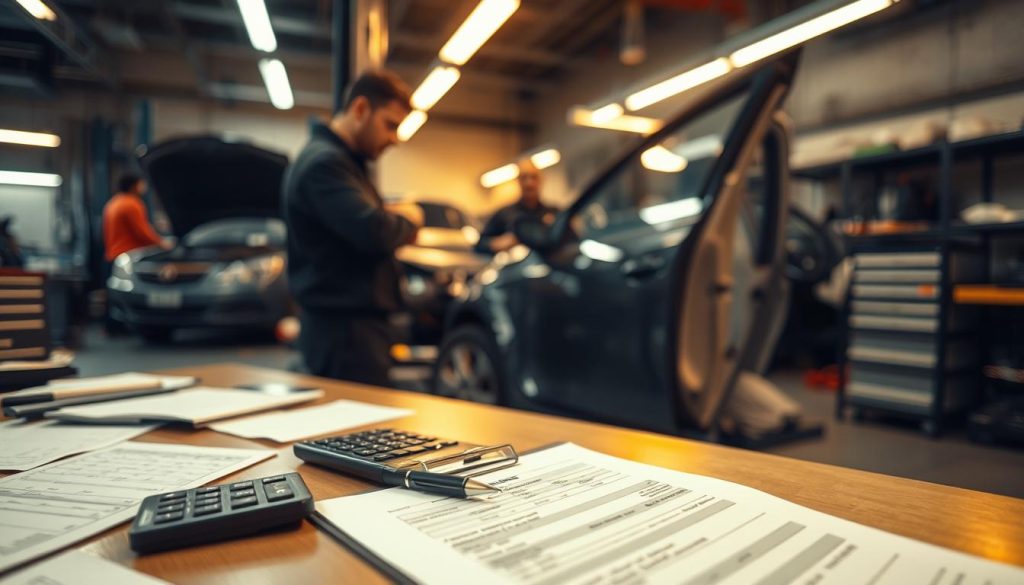
Understanding Your Coverage
Before filing a claim, it’s essential to understand what your insurance policy covers. Most policies include collision repair coverage, which pays for damages to your vehicle resulting from an accident, regardless of fault. Review your policy to know the specifics of your coverage, including deductibles and limits.
- Check if your policy includes comprehensive coverage, which covers damages not related to accidents, such as theft or natural disasters.
- Understand your deductible: the amount you must pay out of pocket before your insurance kicks in.
- Familiarize yourself with the process for filing a claim as outlined by your insurance provider.
Filing a Claim
Filing a claim can seem daunting, but breaking it down into steps can simplify the process. First, document the damage with photos. Then, contact your insurance company to initiate the claim. They will guide you through their specific requirements, which may include getting an assessment from an approved auto body shop.
- Provide detailed information about the incident, including the date, time, and location.
- Share your documentation, such as photos of the damage and any relevant police reports.
- Work with your insurance company to find an approved repair shop for the body work.
By understanding your insurance coverage and following the proper steps for filing a claim, you can ensure that your auto body repairs are handled efficiently and effectively.
The Importance of Proper Installation
Proper installation of auto body parts is crucial for maintaining your vehicle’s overall performance and safety. When auto body parts are installed correctly, it ensures that your vehicle functions as intended, providing a safe and comfortable driving experience.
Risks Associated with Poor Installation
Poor installation of auto body parts can lead to a range of issues, including reduced safety, poor performance, and even further damage to your vehicle. For instance, a poorly installed bumper may not provide the necessary protection in the event of a collision, putting occupants at risk.
Additionally, incorrect installation can lead to uneven wear and tear on other parts, resulting in costly repairs down the line. It is essential to have auto body parts installed by professionals who have the necessary training and expertise.
Ensuring Quality Work
To ensure quality work, it is crucial to choose a reputable auto body repair service that uses high-quality auto parts. Look for technicians who are certified and have experience working with various types of vehicles.
A good auto body repair service will also provide a warranty on their work, giving you peace of mind knowing that any issues resulting from the installation will be addressed.
- Verify the qualifications and experience of the technicians.
- Check if the repair service uses high-quality auto parts.
- Look for warranties or guarantees on the work performed.
Maintaining Your Auto Body Parts
Regular maintenance of your car’s auto body parts is crucial for their longevity and overall performance. After a collision, ensuring that all body work is properly inspected and maintained can prevent further damage and costly repairs down the line.
Regular Inspections
Conducting regular inspections of your vehicle’s auto parts can help identify any potential issues early on. Check for signs of wear, rust, or damage that may have been overlooked during the initial collision repair.
Cleaning and Care Techniques
Proper cleaning and care techniques are vital for maintaining the integrity of your car’s body work. Regular washing, waxing, and applying protective coatings can help shield your vehicle’s auto parts from environmental factors that may cause deterioration.
For professional collision repair and body work, consider visiting Miracle Body and Paint, with two convenient locations in San Antonio. Their expert technicians can ensure that your vehicle’s auto parts are restored to their original condition, providing you with peace of mind on the road.

